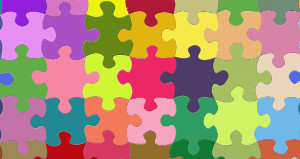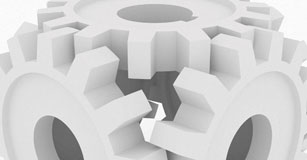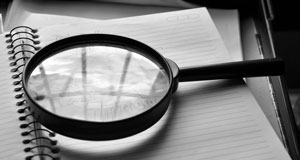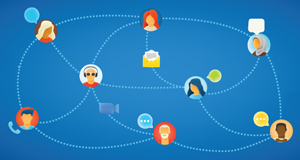Implementing PBL in PE Classes
Physical education performances and playing the whole game
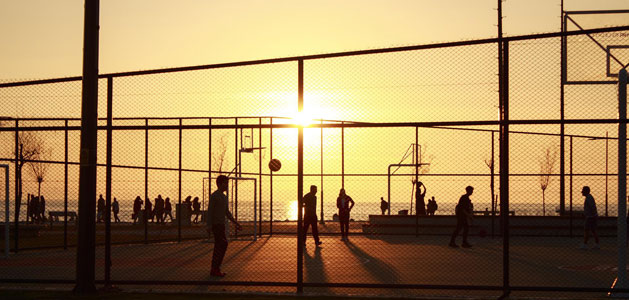
Many schools have been looking to implement project-based learning, or PBL, for improved student learning. In this instructional approach, students are first presented with a real-world problem or issue with the goal of crafting a solution or response. During the process of developing their response through questioning, research, ideation, and solution building, students develop a host of other essential life skills such as collaboration, leadership and project management.
PBL is a powerful approach to content learning, but does that mean physical education should jump on board as well? Here are a few things to consider.
Project vs. Performance
The vocabulary of project-based learning often gets in the way of using this approach in a variety of settings, especially physical education. PE is about activity and building movement skills with your body and brain, not sitting at a desk working on a project. An easy solution is to insert the word performance every time you encounter the word project. A similar terminology switch can be helpful in music and the arts too.
The language of performance-based assessments is a place to start. What can you ask students to do to demonstrate proficiency? This could be a performance or a product and oftentimes the lines are blurred. For example, acting for a video is a performance, making a speech to local business owners is a performance, even writing a letter to persuade local government officials is a performance.
PBL in the PE Classroom
According to the SHAPEAmerica standards, the goal of physical education is to "develop physically literate individuals who have the knowledge, skills and confidence to enjoy a lifetime of healthful physical activity."
While this goal certainly does not state one needs to meet standards with a project or PBL, it also does not state play basketball. But basketball is a part of many PE programs because it is a way to help students meet this goal, and more specifically:
- [demonstrate] competency in a variety of motor skills and movement patterns.
- [apply] knowledge of concepts, principles, strategies and tactics related to movement and performance.
PBL offers similar opportunities.
UN Sustainable Development Goal 3: Good Health and Well-being
The United Nations Sustainable Development Goals (SDGs) were approved by all member nations in 2015. The 17 SDGs are designed to promote peace and prosperity for all people now and in the future. The third goal, Good Health and Well-Being is perfectly suited to the goals of the Physical Education Curriculum.
Specifically, SDG Goal 3 encourages the world to develop solutions that "ensure healthy lives and promote well-being for all at all ages." The wording of this goal opens up a range of possibilities for "products" that meet the goals of physical education as well.
For example, students in PE classes could:
- Develop fitness courses and signage for their school or community.
- Work with their food service department to design a healthy school lunch menu.
- Raise awareness and promote mental health.
- Use 3D printers to construct prosthetic hands for those who can't afford them.
- Develop PSAs to promote health and safety.
- Partner with a local sports team to apply their strategies to improving fitness community-wide.
Find Connections to Other Subjects
You might also connect fitness, health, and safety topics to learning in other subjects. For example, physics teachers at Dripping Springs High School in Texas asked students to help improve the free throw percentages of players on their basketball team. Students dissected a specific player's free throw shooting to determine if the issue might be trajectory or force, mapping out the parabola and making physics-based suggestions for improvement.
While this was a physics classroom, PE students can certainly benefit from using properties of physics to improve their own sports performance. Similarly, athletes benefit from knowledge of structure, function, body systems, and nutrition.
Students in history class at South Doyle High School in Tennessee noticed a lack of sidewalks in their community, impacting both safety and possibilities for active lifestyles. After a visit by a city engineer, students quickly learned about budgets and the criteria for constructing new sidewalks.
While PE needs to include physical activity and movement, tackling health requires skills that may not normally shine during a typical PE class. This allows many kids to participate in physical education classes in ways they wouldn't otherwise normally, forming better connections between students and valuing a range of skills for athletic and non-athletic students.
Use Big Ideas to Guide Instructional Design
Any great PBL addresses a big idea and involves an interesting question or challenge to drive student motivation and engagement. Start by considering big ideas and essential questions in physical education, like:
- How can you take care of yourself?
- What does it mean to be healthy?
- What motivates a person to be healthy?
Use the big ideas to drive instructional goals and help you develop more specific questions to drive student work. For example, the essential question of "What does it mean to be physically fit?" can be made into more specific and actionable driving questions like:
- How can I personally increase and maintain proper fitness?
- Can I design a game to make fitness or skill practice more fun?
- How can I motivate someone else to increase and maintain proper fitness?
Even better, kick off a unit by asking that question to students and let them come up with more specific applications and questions to drive their work, boosting motivation, engagement, ownership and responsibility.
PE Educators as PBL Leaders
Connecting PBL to the content area of physical education may not be obvious, but it is easy to connect the pedagogy of the PE teachers. I might even argue that many sites implement PBL in order to make core learning a lot more like the experience students have in PE!
PE teachers are uniquely qualified to support a PBL approach. Why? Consider David Perkins's statement, "You don't learn to play baseball by a year of batting practice." In his book, Making Learning Whole, Perkins describes the often "elementis" nature of academics, where students are taught individual pieces (rules, theories, and procedures) with the promise that they will learn them later in high school or college.
Physical education doesn't ask students to wait, students learn to play sports, not just develop specific sports skills. While students may practice skills, they are quickly applied and learned more deeply through playing the whole game and in doing so:
- make the game worth playing,
- provide obvious reasons to work on the hard parts,
- play out of town (use it in different contexts),
- help reveal the hidden game, and
- learn from the team (social, interactive, and interdependent).
Grant Wiggins words it similarly:
"In athletics this is very clear: the game is the curriculum; the game is the teacher. And each game is different (even as helpful patterns emerge). Knowledge about the game is secondary, an offshoot of learning to play the game well. As I learn to play, knowledge — about rules, strategy, and technique — accrues, but it is not the point."
This doesn't mean "gamify" the classroom, but being clear that the goal of classroom learning isn't knowledge about a subject, but using that knowledge in order to actively think like a mathematician, inquire like a scientist, or work as a historian.
Instead of asking PE teachers to implement PBL, consider asking them to coach and model a more performance-based approach to learning for the ELA, math, science, and social studies teachers working to take a PBL approach to learning.
In Conclusion
Before you ask physical education classes to implement PBL, consider the goals of PBL and the nature of physical education. By asking PE teachers to implement classroom projects, we can actually encourage them to move away from the student-centered, powerful nature of PBL by moving to an "aboutis" form of learning where students end up telling us about a sport without "taking part in the processes that created that knowledge."
PBL does, however, provide powerful opportunities for students to become physically literate, understanding the benefits of involvement in physical activity and understanding how it contributes to overall health.






